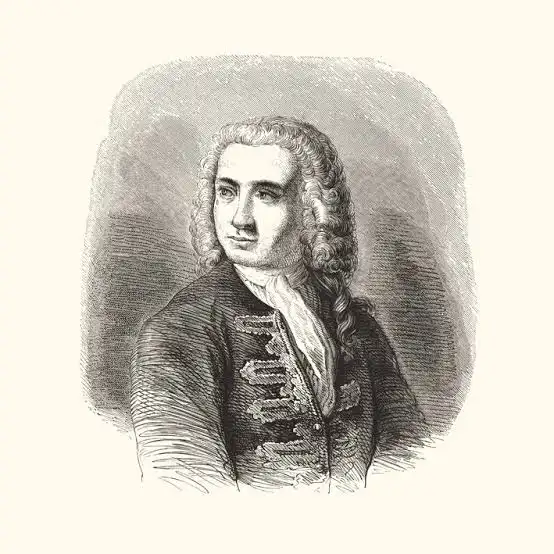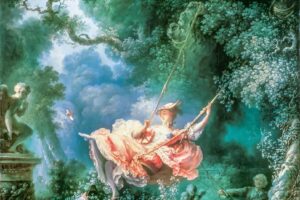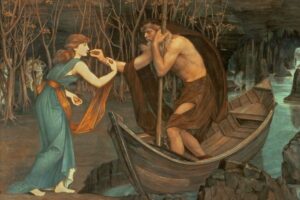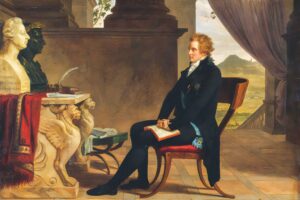Canaletto, c. 1730
Step into the sunlight and glide along the Grand Canal as it appeared in 18th-century Venice—a city of domes, sails, and sparkling water. In this painting, Canaletto invites us to pause at the entrance of the canal, where elegance meets activity and every corner seems touched by light.
A View of Venetian Grandeur
The large church on the left is the Basilica di Santa Maria della Salute, its grand dome rising proudly against the bright sky. The building’s white stone glows in the sun, and its intricate details show Canaletto’s love for architectural precision. Behind it, rooftops and towers stretch into the golden distance, capturing the charm of Venice’s skyline.
On the right side, palaces line the canal, their windows catching the light. These stately homes once belonged to wealthy merchants, their façades silent witnesses to centuries of trade, art, and ceremony.
Life on the Water
Dozens of gondolas and boats fill the foreground, bringing the scene to life. Men in red caps guide the gondolas with long oars, and passengers enjoy their ride, seated in shaded cabins. This was daily life in Venice—graceful, busy, and always moving on water.
There’s no single story here. Instead, we get a collection of moments: someone arriving, someone leaving, someone talking from one boat to another. It’s a glimpse of the city in motion.
Capturing a City with Light and Line
Canaletto was a master of vedute—paintings of real city views. His work is both precise and poetic. He paints with sharp clarity, yet the feeling is always warm and inviting. The reflections in the water, the sweep of the clouds, and the soft golden tones together create a sense of timelessness.
The Entrance to the Grand Canal isn’t just a postcard of Venice—it’s a memory, full of sunlight and sound, carefully painted to be shared.
About Artist

Giovanni Antonio Canal, known as Canaletto (1697–1768), was a Venetian painter of the Rococo period, celebrated for his detailed and atmospheric cityscapes, or vedute. While other Rococo artists focused on interior scenes and mythology, Canaletto specialized in documenting the bustling life and architectural splendor of Venice. His paintings were highly sought after by wealthy British tourists on the Grand Tour, establishing his reputation internationally.
Artistic Style
Canaletto’s style is characterized by a remarkable precision and a mastery of light and perspective. His paintings are not just topographical records; they are vibrant compositions that capture the unique atmosphere of Venice.
- Precision and Detail: Canaletto had an almost photographic eye for architectural detail. He meticulously rendered every building, bridge, and gondola, creating a sense of realism that was groundbreaking for its time.
- Use of Light: He was a master at depicting the shimmering light and reflections on the Venetian lagoon, using subtle color and brushwork to create a sense of depth and luminosity.
- Vibrant Scenes: His works are filled with lively figures, from merchants and gondoliers to elegant ladies and gentlemen, all of which bring the city to life.
Notable Works
Canaletto’s paintings are a historical record and a celebration of Venice.
- The Entrance to the Grand Canal, Venice (c. 1730): This iconic painting is a prime example of his work. It masterfully captures the view from the mouth of the Grand Canal, featuring prominent landmarks like the Santa Maria della Salute church and the Dogana. The painting is renowned for its use of light and its rich details, perfectly conveying the splendor of the city.
- The Bucintoro at the Molo on Ascension Day (c. 1732): This work depicts a major Venetian festival and highlights Canaletto’s ability to paint large, ceremonial scenes with incredible detail and a lively sense of movement.
- The Stonemason’s Yard (c. 1726): An earlier and more naturalistic work, this painting shows a less idealized view of Venice, depicting a busy, working-class scene with a beautiful sense of light and atmosphere.



